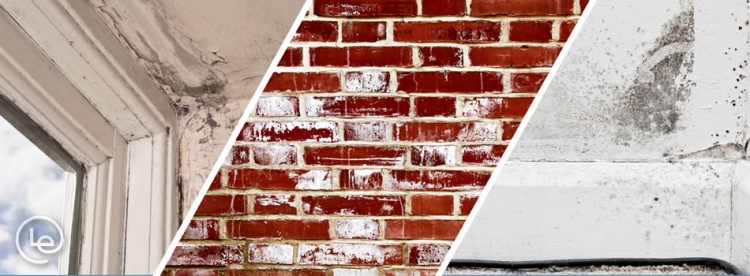Think You Might Have Rising Damp

Think You Might Have Rising Damp
Posted on Thursday, September 15, 2016
Rising damp can cause a lot of damage to your home, so it’s something you need to have investigated as soon as possible.
What is Rising Damp?
As the name suggests, it is obviously about some damp that is rising; but where is it coming from and where is it going? Put simply, it is moisture that has been absorbed from the ground into a wall. It’s a bit like a sponge soaking up some nearby water, or liquid rising up a wick.
If there is nothing to prevent it, the ground water keeps on rising until it reaches a point where the force of gravity it greater, and gravity pulls it down again. Because of this phenomenon the height of any rising damp is about 1-1.2 metres.
It is not only water that can be drawn up into the walls but minerals and salts in the ground rise too. These subsequently crystallise and form a white powder-like substance, often visible on the outside bricks.
1875 Public Health Act
This public health act covered various regulations and importantly included the obligation for a damp-proof course to be put into all future house building projects. Any houses built before 1875 will not be protected from rising damp and it is also possible that some of the houses built in the early years after this act was passed, are now no longer protected as their damp-proofing may have become worn or damaged.
What is a damp-proof course?
There are two aspects to rising damp prevention built into all houses after the 1880s. A damp-proof course is a horizontal layer of either bitumen felt or plastic that is built into the walls at a height of at least 15cm above ground level, to prevent damp rising. In addition, a damp-proof membrane, a sheet of material which is impervious to water, is put under the concrete floor. When this is connected to the damp-proof course, the building is sealed and protected from ground water.
Signs to look for
If you have any ‘tide marks’ above the skirting boards up to a metre high, or the skirting boards and walls are stained and crumbly, the paint and wallpaper is peeling or the flooring is lifting or feels damp – you might have rising damp!
Other Reasons for Rising Damp
There are some other reasons for rising damp. If the ground level outside is higher than your damp-proofing course, you could get rising damp. Not having proper drainage can result in rising damp too.
If you notice any signs of rising damp in your house, or a house you are hoping to buy, get advice from a trusted independent chartered surveyor. It is far safer to ask advice from an independent chartered surveyor than a damp-proofing company, because the independent surveyor will have no ulterior motives to declare that your home needs treatment and will give you the facts.
Call us at Lawrence Eden Associates Limited on 07973 302 088 or 0208 245 3051 if you have any questions or if you suspect that you might have rising damp. We can find the root of the problem and advise you on the next steps to take.




